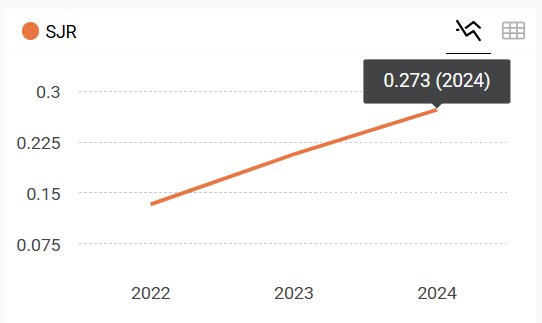Quartiles
| Quartile | Subject Area Category |
| Q3 | Applied Psychology |
| Q3 | Clinical Psychology |
| Q4 | Experimental and Cognitive Psychology |
Psikohumaniora's SJR progress
| Year | SJR |
| 2022 | 0.133 |
| 2023 | 0.207 |
| 2024 | 0.273 |
The editors invite experts, practitioners, and enthusiasts in psychology to submit research articles. These should be original, research-based, unpublished, and not under review for possible publication in other journals. All submitted papers are subject to review by the editors, editorial board, and blind reviewers. Submissions that violate our guidelines on formatting or length will be rejected without review. These should be original, research-based, ethically contrived, unpublished, and not under review for possible publication in other journals.
(Read more)
The copyright of the accepted article shall be assigned to the journal's publisher. The intended copyright includes the right to publish the article in various forms (including reprints). The journal maintains the publishing rights to published articles.
This work is licensed under a Creative Commons Attribution-NonCommercial-ShareAlike 4.0 International License.
In line with the license, authors and any users (readers and other researchers) are allowed to share and adapt the material only for non-commercial purposes. In addition, the material must be given appropriate credit, provided with a link to the license, and indicated if changes were made. If authors remix, transform or build upon the material, authors must distribute their contributions under the same license as the original.
The names and email addresses entered on the journal site will be used exclusively for the stated purposes of the journal and will not be made available for any other purpose or to any other party.
| Quartile | Subject Area Category |
| Q3 | Applied Psychology |
| Q3 | Clinical Psychology |
| Q4 | Experimental and Cognitive Psychology |

| Year | SJR |
| 2022 | 0.133 |
| 2023 | 0.207 |
| 2024 | 0.273 |
|
Governing Body & Contact |
|
Editorial Policies |
Supported by RAJAWALI & PTIPD - UIN Walisongo Semarang - Indonesia
